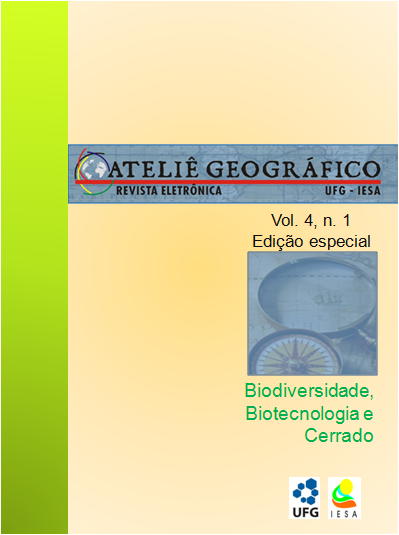BIODIVERSITY MARKETS: research questions for Social Sciences
DOI:
https://doi.org/10.5216/ag.v4i1.16705Abstract
Since the end of the 1980s, the development of genetic engineering and the extension of patents to life forms have suggested that new lucrative uses of natural substances might arise, and that new demands for these resources might appear especially in the pharmaceutical, cosmetics and food industries. The Convention on Biological Diversity, adopted during the Rio Conference in 1992, was an attempt to reconcile theconservation of biodiversity with the claims of indigenous communities who hold these resources through the institution of markets. Its purpose was to put an end to biopiracy and to secure the fair and equitable sharing of the benefits arising from the use of genetic resources. The promotion of these “biodiversity markets” has been supported by the free trade movement of the 1980s. These markets have aroused speculations. But beyond slogans, what about the commoditization of life forms today? Which forms does it take in the North and in the South? Is the legal and political framework settled by the Convention on Biological Diversity still relevant in the face of scientific progress and technical change? Does it prove adapted to the complexity of real life situations? Our research illustrates the way social sciences address global environmental issues.Downloads
Download data is not yet available.
Downloads
Published
2011-12-27
How to Cite
AUBERTIN, Catherine; PINTON, Florence; BOISVERT, Valérie. BIODIVERSITY MARKETS: research questions for Social Sciences. Ateliê Geográfico Journal, Goiânia, v. 4, n. 1, p. 6–17, 2011. DOI: 10.5216/ag.v4i1.16705. Disponível em: https://revistas.ufg.br/atelie/article/view/16705. Acesso em: 27 dec. 2025.
Issue
Section
Articles
License
Autores que publicam nesta revista concordam com os seguintes termos:- Autores mantém os direitos autorais e concedem à revista o direito de primeira publicação, com o trabalho simultaneamente licenciado sob a Licença Creative Commons Attribution que permite o compartilhamento do trabalho com reconhecimento da autoria e publicação inicial nesta revista.
- Os autores não serão remunerados pela publicação de trabalhos na Revista Ateliê Geográfico. Além disso, os conteúdos publicados são de inteira e exclusiva responsabilidade de seus autores, ainda que reservado aos editores o direito de proceder a ajustes textuais e de adequação às normas da publicação.
- Autores têm permissão e são estimulados a divulgar seu trabalho online (ex.: em repositórios institucionais ou na sua página pessoal), já que isso pode gerar alterações produtivas, bem como aumentar o impacto e a citação do trabalho publicado (Veja O Efeito do Acesso Livre).


